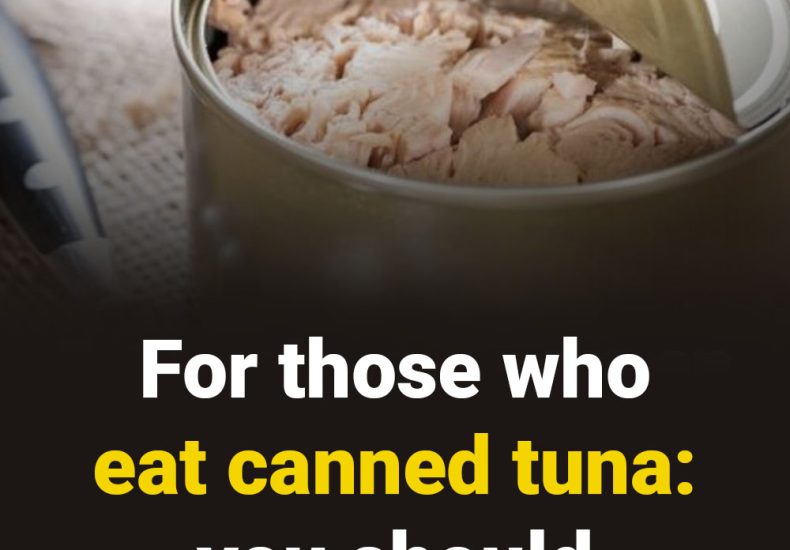
For Those Who Eat Canned Tuna: You Should Know This…
Canned tuna has long been a go-to staple for busy families, athletes, and anyone seeking a quick, protein-packed meal. It’s affordable, convenient, and can be tossed into salads, sandwiches, or eaten straight out of the can. But while it may seem like a healthy choice, there are some important — and potentially concerning — facts you should know before making it a regular part of your diet.
🐟 1. Mercury Levels: The Hidden Danger
One of the biggest concerns with canned tuna is mercury contamination. Tuna, being a larger fish, tends to accumulate mercury over time due to ocean pollution. When humans consume too much mercury, it can affect the nervous system, brain function, and even heart health.
- Albacore (white) tuna generally contains more mercury than light tuna.
- Experts recommend limiting canned albacore tuna to no more than one can per week, especially for pregnant women and children, as mercury can interfere with fetal development.
⚠️ 2. Sodium and Additives
Many canned tuna varieties — especially those packed in brine or flavored oils — contain high levels of sodium and sometimes preservatives. Too much sodium can raise blood pressure and increase the risk of heart disease over time.
To minimize this, choose tuna packed in water with no added salt, and always read the label. Some “flavored” versions also contain artificial ingredients, so sticking with plain tuna is usually the healthiest option.
🧂 3. BPA in Cans
Most canned foods, including tuna, are lined with BPA (Bisphenol A) — a chemical used to prevent corrosion inside metal cans. Studies have linked BPA exposure to hormonal imbalances, fertility issues, and even certain cancers.
Also Read : The 10 Things You Should Never Store on Your Kitchen Countertops — And Why Most People Still Do It
If you eat tuna regularly, look for BPA-free cans or brands that use pouch packaging, which often skips the lining altogether.
💧 4. Oil vs. Water Packing: Which Is Better?
- Tuna in oil tends to be higher in calories and fat. While the oil can enhance flavor, it can also leach out omega-3 fatty acids — the very nutrients that make tuna heart-healthy in the first place.
- Tuna in water preserves more of its natural nutrients and is generally the better choice if you’re watching your weight or sodium intake.
🧬 5. Sustainability and Ethical Concerns
Not all canned tuna is caught responsibly. Some brands use fishing methods that harm marine life, including dolphins and other sea creatures caught in nets.
When buying canned tuna, look for certifications like:
- “Dolphin Safe”
- MSC (Marine Stewardship Council) or Friend of the Sea labels
These ensure the tuna was caught using environmentally friendly practices.
🩺 6. The Health Benefits — When Eaten in Moderation
Despite the warnings, canned tuna does have its nutritional upsides:
- High in lean protein
- Packed with omega-3 fatty acids, which support brain and heart health
- Contains vitamins B12 and D, and important minerals like selenium and iron
The key is moderation — enjoying tuna as part of a balanced diet, not a daily staple.
🍽️ Bottom Line: How Much Is Safe?
Here’s a simple rule of thumb for safe consumption:
- Adults: 2–3 servings per week of light tuna (around 6 ounces each).
- Pregnant/Breastfeeding Women: 1 serving per week of light tuna, and avoid albacore altogether.
- Children: Limit to 1–2 small servings per week.
💡 Final Thoughts
Canned tuna can be a healthy, affordable source of protein — if chosen wisely. Opt for light tuna, packed in water, from reputable brands that test for mercury and use BPA-free packaging.
Your body (and the planet) will thank you. 🌍🐠
Leave a Reply